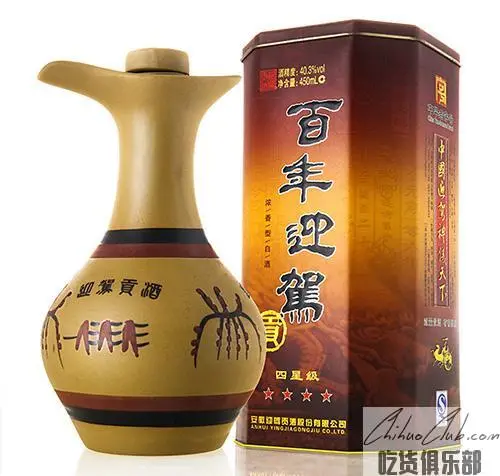
Ying Jia tribute Liquor
-
Update date::
-
Date of protection::
-
Protected range:The scope of protection for GI wine GI products is based on the scope of the “Huashan County People’s Government of Anhui Province on the definition of the scope of protection of GI wine products” (Huo Zhengshen [2006] No. 13), which is the scope of Anhui Province. 7 townships and towns in Hengshan Town, Foziling Town, Heishidu Town, Xiafuqiao Town, Sunxiang Town, Mozitan Town and Dahuaping Town of Huoshan County
-
Category:
“Welcome to the wine” is produced in the Dabie Mountain area of Anhui Province. Due to the unique natural environment and profound cultural heritage, it has created a unique wine style of “Welcome to the Wine”. The product adopts Dabie Mountain ecological water, combined with high-quality Wuliang raw materials (sorghum, rice, glutinous rice, wheat, corn), which is formed by the traditional brewing process. The whole wine quality is presented as “muscle and elegant, with thick sauce and sweetness”. The representative quality characteristics of “sweet mouth and various flavors” are also the key to distinguishing other liquors from “welcoming wines”.
Welcome to the quality and technical requirements (a) raw materials. 1. The brewing and grouting water uses the Dongpu River water in the protected area. 2. Sorghum adopts high-quality sorghum produced in areas below 40 degrees north latitude, such as Liaoning, Shanxi and Inner Mongolia, which meet the requirements of GB/T8231. 3. Wheat meets the high quality wheat specified in GB 1351. 4. Rice and glutinous rice meet the quality rice specified in GB 1354 standard. 5. Corn meets the quality corn specified in GB 1353. 6. The koji drug complies with the Q/YJ04 standard. (2) Process. High-quality sorghum, rice, glutinous rice, wheat and corn are used as raw materials, and high-temperature Daqu is used as saccharification and fermenting agent. Dongtuo River water in the protected area is used for brewing and watering, and continuous slag mixing, running, circulation and mud are used. Distilled liquor produced by the technology of the old fermentation of the pond, the bottom of the bottom, the second high, the low and the long. 1. The koji process: brewing uses a high temperature Daqu as a saccharification starter with a core temperature of 61 to 64 °C. In the process of culturing, the wheat gliadin and gluten are reacted with the reducing sugar under the action of high temperature to form a heterocyclic aromatic compound, so that the koji produces a seasoned flavored scent. In the wine making process, the wine is rich in special flavor, making the wine body sophisticated and elegant. Process: wheat→running→crushing→adding water→packing→stepping→cooling→into the roomu0026apos;s culture→culture management→stacking→out of the song→stock storage (1) moisture 3% of the moisture 5%; (2) crushing plum petals that require rotten skin not bad; (3) water content of 37% to 39%; (4) top fire temperature of 61 to 64 ° C for more than seven days; (5) culture period of 30 days; (6) Storage in the warehouse for more than 3 months. 2. Brewing process: (process diagram omitted) (1) The mud pool old man who is more than ten years old is used as the fermentation tank. (2) Raw material ratio: sorghum, rice, glutinous rice, wheat, corn, 40:22:18:14:6. Crushing degree: 4, 6, 8 petals. Grain to grain ratio: 1:4 to 4.5 in winter and 1:5 to 5.5 in summer. (3) The rice husk is fresh, coarse, dry and golden yellow, no mildew, no deterioration, no japonica rice or japonica rice glutinous rice, steamed for more than 30 minutes before use and cool, the rice husk dosage is 20% to 25%. (4) The saccharification power is 400 to 600 units, the fermentation force is 150 units or more, the fine powder of the pulverization 20 mesh sieve accounts for 70% to 75%, and the grain-to-grain ratio is 18% to 22%. (5) The starch in the pool is between 20% and 22%, and between 18% and 20% in summer. (6) The moisture in the pool is about 52% to 54%. (7) The acidity of the pool is 1.5 to 2.5. (8) The stratification is bad, and the dregs are smashed into the bottom, the bottom, the middle and the bottom. (9) The fermentation cycle is 80-120 days. (10) slow-fire distillation, truncated to tail, mass-quality wine, grading storage, steaming time is not less than 60 minutes. 3. Hook storage process: (1) The original wine is stored in a terracotta grading. (2) The finished wine is tune-up using the high-quality original wine stored for more than one year as the base wine, and the special seasoning wine stored for more than five years is used for the adjustment. (3) The water used for the addition of pulp is treated with Donglu River water treated by three-stage filtration of manganese sand, quartz sand and activated carbon in the protected area. (3) Quality characteristics. Item standard requires alcohol content,% (V/V) 504542 Apparent color is colorless (or yellowish) transparent, no suspended matter, no precipitated aroma, musk, elegant and concentrated with a sauce, musk, elegant and concentrated with a sauce, musk and elegant The taste of the sauce is sweet and refreshing, the flavors are coordinated, the sweetness is sweet and refreshing, the flavors are coordinated, the sweetness is sweet and refreshing, the flavors are coordinated, and the Yichang style has a unique style of physicochemical acid with a musky and elegant flavor. (calculated as acetic acid), g/L ≥ 0.600.500.50 total ester (with ethyl acetate), g / L ≥ 2.001.801.80 ethyl hexanoate, g / L ≥ 1.200.800.80 solids, g / L ≤ 0.400 .600.60 Note: Alcohol tolerance is ±1% (V/V)
Apply to:
Producers who are within the scope of protection of GI wine GI products may apply to the Huoshan County Quality and Technical Supervision Bureau of Anhui Province for the use of the “Special Mark for Geographical Indication Products”, which is approved by the General Administration of Quality Supervision, Inspection and Quarantine.